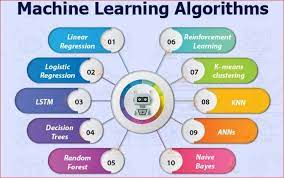Unlocking Potential: Where to Find the Best Free Image Datasets for Your Projects

Introduction to Image Datasets
As a data scientist or machine learning enthusiast, the value of high-quality image datasets cannot be overstated. Image datasets are a crucial component in training and testing various computer vision algorithms, and they play a pivotal role in the development of cutting-edge technologies such as facial recognition, object detection, and image classification. Access to a diverse and extensive collection of images is essential for building robust and accurate models. However, acquiring such datasets can be a challenging task, especially when cost is a limiting factor. In this article, I will explore the realm of free image datasets, discussing their importance, where to find them, best practices for usage, legal considerations, and their applications in diverse projects.
Importance of Using Free Image Datasets
The significance of using free image datasets cannot be emphasized enough, particularly for individuals and organizations with limited resources. Free image datasets provide an opportunity for researchers, developers, and hobbyists to experiment, innovate, and learn without financial constraints. They foster inclusivity and accessibility, allowing aspiring professionals from all walks of life to delve into the exciting field of computer vision and image processing. Moreover, free image datasets often represent a wealth of diverse images, spanning various categories, which is essential for training models that are robust and generalizable. By utilizing free image datasets, developers can cultivate their skills, contribute to open-source projects, and democratize the advancement of artificial intelligence and machine learning.
In addition to the practical benefits, using free image datasets also aligns with ethical considerations. It promotes the responsible utilization of resources and encourages a collaborative ethos within the technology community. Furthermore, free image datasets offer an avenue for individuals and organizations to engage in socially impactful projects, such as developing tools for healthcare, disaster relief, environmental monitoring, and cultural preservation. By leveraging free image datasets, the potential for positive societal change through technology becomes more attainable and inclusive.

Where to Find the Best Free Image Datasets
Now that we understand the significance of free image datasets, the next logical question is: where can one find them? Several reputable sources curate and provide access to high-quality free image datasets, catering to a broad spectrum of applications and research domains. One of the prominent platforms for discovering free image datasets is Kaggle, a community-driven data science platform that hosts competitions, datasets, and notebooks. Kaggle offers a diverse array of image datasets contributed by users and organizations, covering topics ranging from medical imaging to natural scenes and beyond. The platform also facilitates collaboration and knowledge sharing, making it an invaluable resource for aspiring data scientists and machine learning practitioners.
Another notable source for free image datasets is Open Images, an initiative by Google aimed at providing a massive, openly licensed collection of images to foster the development of computer vision research and applications. Open Images hosts a vast repository of annotated images, enabling researchers to explore tasks such as object detection, image classification, and visual relationship detection. The dataset encompasses a wide range of concepts and scenarios, making it suitable for a multitude of computer vision projects. Moreover, Open Images adheres to open data principles, ensuring that the images are freely accessible for non-commercial and commercial use alike.
Popular Sources for Free Image Datasets
In addition to Kaggle and Open Images, several other platforms and initiatives serve as valuable sources for free image datasets. The internet archive, commonly known as the Wayback Machine, features a curated collection of public domain and openly licensed images, covering historical archives, art, culture, and scientific illustrations. This repository is a treasure trove for individuals seeking unique and diverse images for creative projects, historical research, and educational purposes. Another notable platform for free image datasets is Unsplash, a community-driven photography website that offers a vast library of high-resolution images contributed by photographers from around the world. These images are licensed under the Unsplash license, allowing for broad usage in both personal and commercial projects.
Furthermore, academic institutions and research organizations often release image datasets as part of their research publications, enabling the broader community to benefit from their work. Websites such as the Computer Vision Homepage and the Visual Data website host a collection of datasets contributed by researchers and institutions, encompassing a wide spectrum of applications and domains. These platforms serve as valuable resources for accessing specialized and domain-specific image datasets, catering to the diverse needs of researchers, educators, and practitioners in the field of computer vision.
Best Practices for Using Free Image Datasets

While the availability of free image datasets presents an invaluable opportunity for experimentation and innovation, it is essential to approach their usage with best practices in mind. When utilizing free image datasets, it is crucial to thoroughly understand the licensing terms and usage rights associated with the images. Many free image datasets are released under specific licenses, such as Creative Commons licenses, which dictate the permissible uses of the images. It is imperative to adhere to the terms of the licenses and give appropriate attribution when required, ensuring ethical and legal compliance.
Moreover, it is advisable to assess the quality and relevance of the free image datasets before incorporating them into projects. Assessing the quality of image datasets involves considering factors such as image resolution, diversity, and representativeness of the underlying concepts. Ensuring that the dataset aligns with the specific requirements of the project and exhibits a balanced representation of different classes or categories is essential for building robust and generalizable models. Additionally, it is beneficial to preprocess and augment the images within the dataset to enhance their suitability for the intended application, which can involve tasks such as resizing, normalization, and data augmentation techniques.
How to Evaluate the Quality of Free Image Datasets
Evaluating the quality of free image datasets requires a systematic approach to assess various dimensions of the dataset. One fundamental aspect of quality evaluation is the diversity and representativeness of the images within the dataset. A high-quality image dataset should encompass a broad range of visual concepts, scenes, and objects, ensuring that the models trained on the dataset exhibit robustness and generalization capabilities. Furthermore, the resolution and clarity of the images are crucial factors that contribute to the overall quality of the dataset. Images with higher resolutions and clarity enable the development of more precise and accurate computer vision models, especially in tasks such as object detection and image segmentation.
Another important criterion for evaluating the quality of free image datasets is the presence of annotations or labels. Annotated datasets provide valuable ground truth information for training and evaluating models, enabling tasks such as object localization and semantic segmentation. The presence of accurate and comprehensive annotations enhances the utility of the dataset for a wide range of computer vision applications. Additionally, evaluating the distribution of images across different categories or classes within the dataset is essential to ensure that the dataset is balanced and representative of real-world scenarios. Imbalanced datasets can lead to biased models and hinder their performance in practical applications.
Legal Considerations When Using Free Image Datasets
Incorporating free image datasets into projects necessitates a thorough understanding of the legal considerations associated with the images. Many free image datasets are released under specific licenses, such as Creative Commons licenses, which govern the terms of usage and redistribution. It is imperative to carefully review the licensing terms associated with each dataset and adhere to the stipulated requirements. Some licenses may permit unrestricted usage, including commercial applications, while others may require attribution or impose restrictions on derivative works. Understanding and complying with the licensing terms is essential to avoid legal repercussions and uphold ethical standards in the utilization of free image datasets.
In addition to licensing considerations, it is crucial to respect the privacy and consent aspects associated with the images within free datasets. Images depicting individuals, private properties, or sensitive contexts may be subject to privacy regulations and ethical considerations. It is essential to exercise discretion and ensure that the usage of such images complies with relevant privacy laws and ethical guidelines. Furthermore, when utilizing free image datasets for commercial applications, it is advisable to seek legal counsel to ensure compliance with intellectual property rights and any specific regulations governing the use of images in commercial contexts.
Applications of Free Image Datasets in Projects
The versatility and accessibility of free image datasets make them indispensable for a wide range of projects and applications. From developing innovative computer vision algorithms to creating compelling visual content, free image datasets serve as a foundational resource for diverse endeavors. In the realm of machine learning and artificial intelligence, free image datasets are instrumental in training models for tasks such as image classification, object detection, facial recognition, and image generation. They enable researchers and developers to explore and push the boundaries of computer vision capabilities, driving advancements in areas such as autonomous vehicles, medical imaging, and visual search technologies.
Beyond the domain of technology, free image datasets find applications in creative and artistic pursuits, empowering designers, artists, and content creators to access a wealth of visual inspiration. These datasets facilitate the development of artistic tools, visual storytelling, and multimedia content creation, fostering innovation and expression in the creative industry. Furthermore, free image datasets play a pivotal role in educational initiatives, providing educators and students with resources to explore concepts in visual perception, image analysis, and cultural studies. By leveraging free image datasets, educational institutions can enhance their teaching materials and engage students in hands-on learning experiences centered around visual data.
Tips for Utilizing Free Image Datasets Effectively
Maximizing the utility of free image datasets requires a strategic and informed approach to their utilization. To leverage free image datasets effectively, it is beneficial to identify and prioritize the specific requirements and objectives of the project. Understanding the target application and the characteristics of the images needed for the project enables the selection of relevant and high-quality datasets. Moreover, it is advisable to explore and experiment with diverse datasets to gain exposure to different visual contexts and scenarios, enriching the learning and development process.
Furthermore, actively engaging with the community and contributing to the enhancement of free image datasets can yield mutual benefits. By participating in data annotation efforts, sharing insights, and providing feedback on existing datasets, individuals can contribute to the improvement and enrichment of the available resources. This collaborative approach fosters a culture of knowledge exchange and continuous improvement within the community of practitioners and researchers working with image datasets. Additionally, staying informed about the latest advancements and best practices in image dataset utilization through publications, forums, and community discussions equips practitioners with valuable insights and strategies for optimizing their use of free image datasets.



 Afrikaans
Afrikaans Albanian
Albanian Amharic
Amharic Arabic
Arabic Armenian
Armenian Azerbaijani
Azerbaijani Basque
Basque Belarusian
Belarusian Bengali
Bengali Bosnian
Bosnian Bulgarian
Bulgarian Catalan
Catalan Cebuano
Cebuano Chichewa
Chichewa Chinese (Simplified)
Chinese (Simplified) Chinese (Traditional)
Chinese (Traditional) Corsican
Corsican Croatian
Croatian Czech
Czech Danish
Danish Dutch
Dutch English
English Esperanto
Esperanto Estonian
Estonian Filipino
Filipino Finnish
Finnish French
French Frisian
Frisian Galician
Galician Georgian
Georgian German
German Greek
Greek Gujarati
Gujarati Haitian Creole
Haitian Creole Hausa
Hausa Hawaiian
Hawaiian Hebrew
Hebrew Hindi
Hindi Hmong
Hmong Hungarian
Hungarian Icelandic
Icelandic Igbo
Igbo Indonesian
Indonesian Irish
Irish Italian
Italian Japanese
Japanese Javanese
Javanese Kannada
Kannada Kazakh
Kazakh Khmer
Khmer Korean
Korean Kurdish (Kurmanji)
Kurdish (Kurmanji) Kyrgyz
Kyrgyz Lao
Lao Latin
Latin Latvian
Latvian Lithuanian
Lithuanian Luxembourgish
Luxembourgish Macedonian
Macedonian Malagasy
Malagasy Malay
Malay Malayalam
Malayalam Maltese
Maltese Maori
Maori Marathi
Marathi Mongolian
Mongolian Myanmar (Burmese)
Myanmar (Burmese) Nepali
Nepali Norwegian
Norwegian Pashto
Pashto Persian
Persian Portuguese
Portuguese Punjabi
Punjabi Romanian
Romanian Russian
Russian Polish
Polish Samoan
Samoan Scottish Gaelic
Scottish Gaelic Serbian
Serbian Sesotho
Sesotho Shona
Shona Sindhi
Sindhi Sinhala
Sinhala Slovak
Slovak Slovenian
Slovenian Somali
Somali Spanish
Spanish Sundanese
Sundanese Swahili
Swahili Swedish
Swedish Tamil
Tamil Tajik
Tajik Telugu
Telugu Turkish
Turkish Ukrainian
Ukrainian Urdu
Urdu Uzbek
Uzbek Thai
Thai Vietnamese
Vietnamese Welsh
Welsh Xhosa
Xhosa Yiddish
Yiddish Yoruba
Yoruba Zulu
Zulu